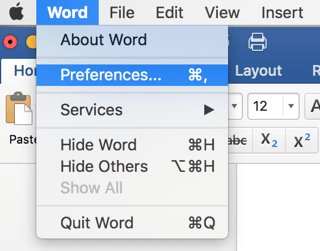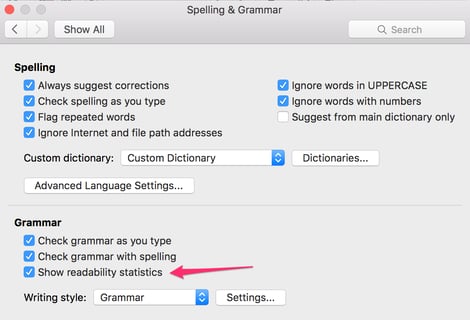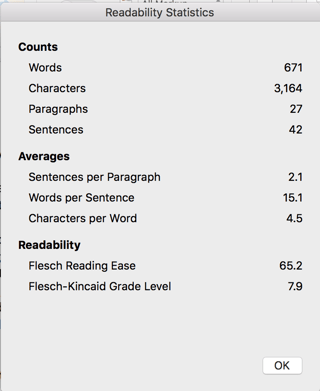How to Use a Little-Known Tool to Improve Your Website Content
Posted by Lindsey Bowshier on Jul 25, 2016 1:00:00 PM

In my first writing job (at a college newspaper, mind you), I learned that I should write to an eighth-grade reading level. When it comes to writing marketing content for the web, I actually recommend writing to a fifth to eighth-grade reading level. Not because I think every reader is an uneducated dope, but because people consume content differently on the web. Even the person who can read "War and Peace" without picking up a dictionary, consumes web content under different conditions and with a different purpose than when they are feeding their intellect with classic Russian literature.
If you write website content for your business, you should know about a handy tool in Microsoft Office that rates the readability of your writing.
What is a Readability Score?
A readability score grades a piece of writing on how easy it is for a reader to understand. The Readability score that Microsoft Office gives is based on the Flesch-Kincaid Method.

Rudolf Flesch was a 20th-century lawyer who actually cared about writing in clear terms that the laymen could understand. The formula he helped develop in the mid-'70s is based on how the eyes and the mind work together when a person reads. Breaks in the text, such as punctuation and paragraph breaks, allow the reader's mind to pause and evaluate the text consumed so far. Each time the reader pauses, they have a chance to reevaluate. The more times they reevaluate, the better they understand the material.
In other words: Short sentences are good.
Even short sentences that stand alone as their very own paragraph are good.
Do you follow? I bet you do!
In the Flesch-Kinkaid method, the higher the score, the easier it is for the reader to understand. A score of 100-90 equates to about a fifth-grade reading level. A score of 70-60 is considered about an eighth to ninth grade reading level.How Do You Use the Tool?
Here is a step-by-step guide for how to use the tool on a Mac. If you use a PC, I'm sorry. And yes, I meant that to have double meaning.To enable the tool:
1. Click on "Preferences" under "Word"

2. Under Authoring and Proofing Tools, click "Spelling & Grammar"
3. Select the box "Show Readability Statistics"

To use the tool:
1. Click "Tools"
2. Hover over "Spelling & Grammar"
3. Click "Check Document"

After the tool makes spelling and grammar suggestions, it will give you the readability score.
 What Does It All Mean?
What Does It All Mean?
The readability score is calculated based on several factors, including average characters per word, average word count per sentence, and average sentences per paragraph. A good score for marketing content would be 70 or higher. As you will see from the screen shot of the readability score for this piece, my score is a little lower than ideal. I attribute this to the fact that a Flesch score of 80 would have an average syllable count per word of 1- 1.5, and the word "readability," which is used several times, for obvious reasons, has five syllables.
So just give me a break, okay?
Next time you're writing a piece of marketing content for the web, try using this tool. If you score below 70, review your writing to see what you can do to improve readability. Are there complex words that could be simplified? Are there complicated sentences that could be broken up? Are your paragraphs too long? Make a few tweaks and check your score again.
After using this tool for awhile, it will get easier to sense when your writing is overly complicated or tedious. The best word choices will start to come naturally, and you will quickly become a writer who would make Rudolf Flesch proud.
Written by Lindsey Bowshier
Lindsey is the President of Tribute Media. Her degree is in English and Communication with an emphasis in Journalism, her background is in copywriting and content marketing, and she's had pretty much every job at Tribute Media since she joined the agency in 2014. Outside of work, Lindsey participates in a "super-cool-not-at-all-nerdy" writing group. Her favorite writer is Dorothy Parker.

